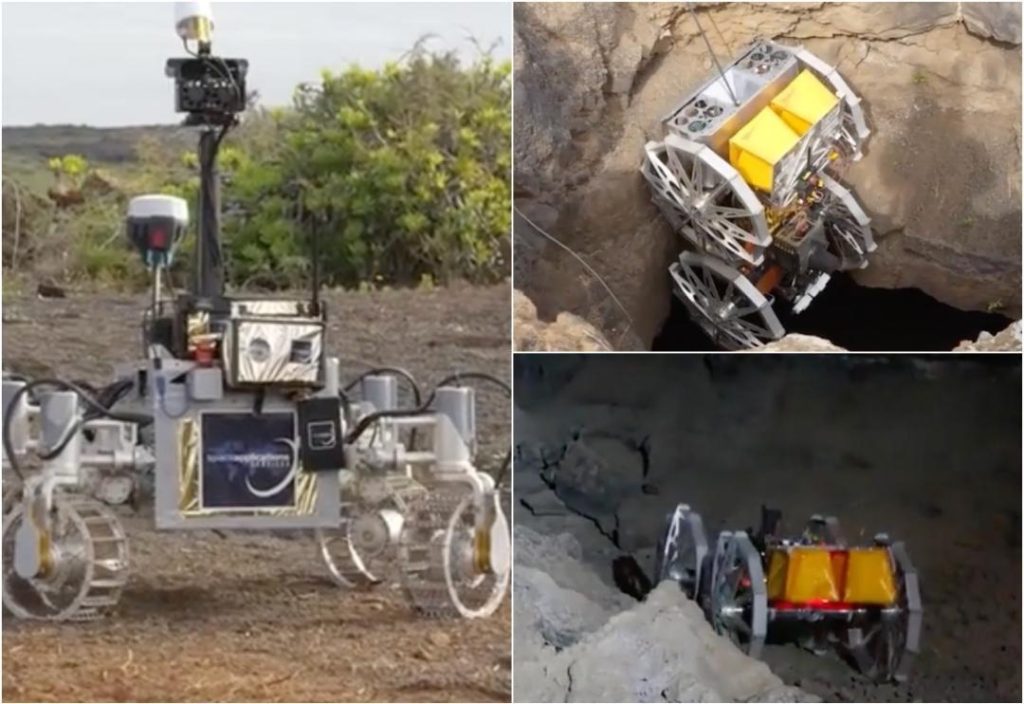
Robots Explore Lava Caves to Aid Future Human Settlements on Moon
As humanity continues to explore the vast expanse of space, the search for suitable habitats for future human settlements has become a pressing concern. In recent years, scientists have turned their attention to the Moon and Mars, two celestial bodies that offer potential opportunities for establishing a human presence. However, these destinations pose significant challenges, including extreme temperatures, radiation, and meteorite impacts. A recent breakthrough in robotics technology may have provided a crucial solution to these issues, with a team of robots successfully exploring a lava cave on Spain’s Lanzarote island and building a 3D model of the surrounding area and skylight.
Formed by volcanic activity, lava caves offer natural protection from radiation and meteorites, making them an attractive option for protecting human-made facilities. The recent mission, led by researchers from the University of Seville and the Spanish National Research Council, demonstrated the feasibility of using robots to explore and map these subterranean structures.
The lava cave, located on Lanzarote’s north coast, was chosen for its ease of access and similarity to the lava tubes found on the Moon and Mars. The team deployed a fleet of robots, including a robotic explorer, a 3D mapping system, and a remote-controlled rover, to traverse the cave’s winding passages and collect data.
The robotic explorer, equipped with a range of sensors and cameras, navigated the cave’s dark and narrow passages, collecting data on the cave’s geology and structure. The 3D mapping system, using a combination of lidar and photogrammetry, created a highly accurate model of the cave’s layout, including the position and shape of rocks, stalactites, and stalagmites.
The remote-controlled rover, designed to operate in low-light conditions, was used to collect samples and conduct experiments in areas inaccessible to the other robots. The rover’s multiple cameras and sensors allowed it to map the cave’s floor and walls, providing valuable insights into the cave’s formation and evolution.
The mission’s primary objective was to create a comprehensive 3D model of the lava cave, including its skylight, a natural opening that allows sunlight to enter the cave. The model, which was created using data from the robots and other sources, provides a detailed representation of the cave’s structure and layout.
The implications of this mission are significant, with the potential to aid future exploration of lava tubes on the Moon and Mars. These subsurface structures, formed by volcanic activity, offer a natural shield against radiation and meteorites, making them an attractive option for protecting human-made facilities.
“The lava caves on the Moon and Mars are a promising area for future human settlements,” said Dr. José María González-Morales, lead researcher on the project. “By using robots to explore and map these caves, we can identify the most suitable locations for establishing a human presence and developing infrastructure.”
The mission’s success has also highlighted the potential for robotic exploration to aid in the search for water on the Moon and Mars. Water is a critical resource for human survival, and the presence of water ice in lava tubes could provide a reliable source of supply for future settlers.
As humanity continues to push the boundaries of space exploration, the development of robotic technologies is essential for overcoming the challenges of establishing a human presence on other planets. The recent mission to explore lava caves on Lanzarote island is a significant step forward in this process, demonstrating the potential for robots to aid in the search for suitable habitats and resources.
Source:
https://www.science.org/doi/10.1126/scirobotics.adj9699






